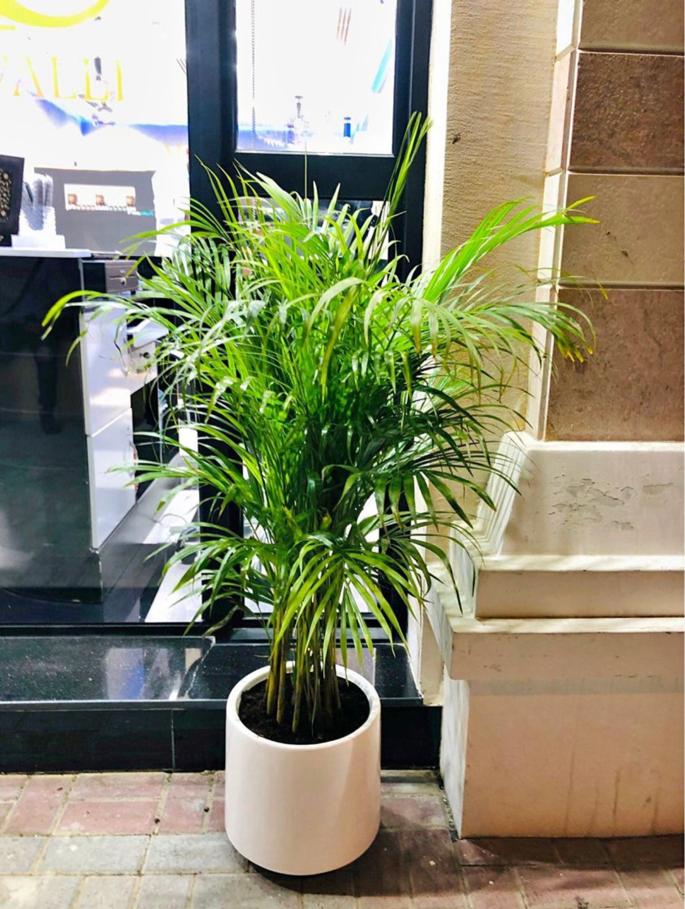PlantmartUAE
Areca Palm in White Fiber-Clay Pot
Areca Palm in White Fiber-Clay Pot
Couldn't load pickup availability

Light:
Chrysalidocarpus lutescens is tolerant of both light shade and bright, indirect light, however avoid excessive amounts of shade and direct light as these will harm the palm.
Watering:
Water well, keeping the soil moist at root level at all times. In summer, Areca Palms can be thirsty, particularly if located in a warm spot. Requires less water in winter. Do not overwater.
Temperature:
Average household temperatures between 15-25°C are fine, although the warmer the better. Will not tolerate temperatures below 10°C.
Humidity:
Areca palms enjoy high humidity levels. Place on a shallow gravel tray filled with water and mist regularly. Ideal in kitchens and bathrooms.
Height & Growth Rate:
Areca Palms are moderate to fast growing plants and typically reach an ultimate height of around 3m, although this is unlikely indoors.
Toxicity:
Areca Palms are non-toxic and therefore safe around children and animals.
Air Purifying:
Palms clean and improve air quality by filtering formaldehyde, benzene and carbon monoxide toxins from the surrounding environment.
Origin:
Chrysalidocarpus lutescens is native to Madagascar.Areca palm | Chrysalidocarpus Lutescens
Areca palm | Chrysalidocarpus Lutescens, scientifically known as Chrysalidocarpus lutescens, is a popular tropical palm species prized for its elegant fronds and graceful appearance. Areca palm features a cluster of slender, graceful fronds that emerge from multiple stems, creating a lush and tropical appearance. The fronds are pinnate, meaning they have feather-like leaflets arranged along a central stalk, which can grow up to 6 to 8 feet (1.8 to 2.4 meters) in length. The overall shape of the plant is vase-like, with arching fronds that gently curve outward.
Areca palms are native to Madagascar and prefer warm, humid climates. They thrive in bright, indirect light but can tolerate partial shade. They require well-draining soil and regular watering to keep the soil consistently moist but not waterlogged. They are sensitive to cold temperatures and should be protected from drafts and frost.
Materials
Materials
Shipping & Returns
Shipping & Returns
Dimensions
Dimensions
Care Instructions
Care Instructions


